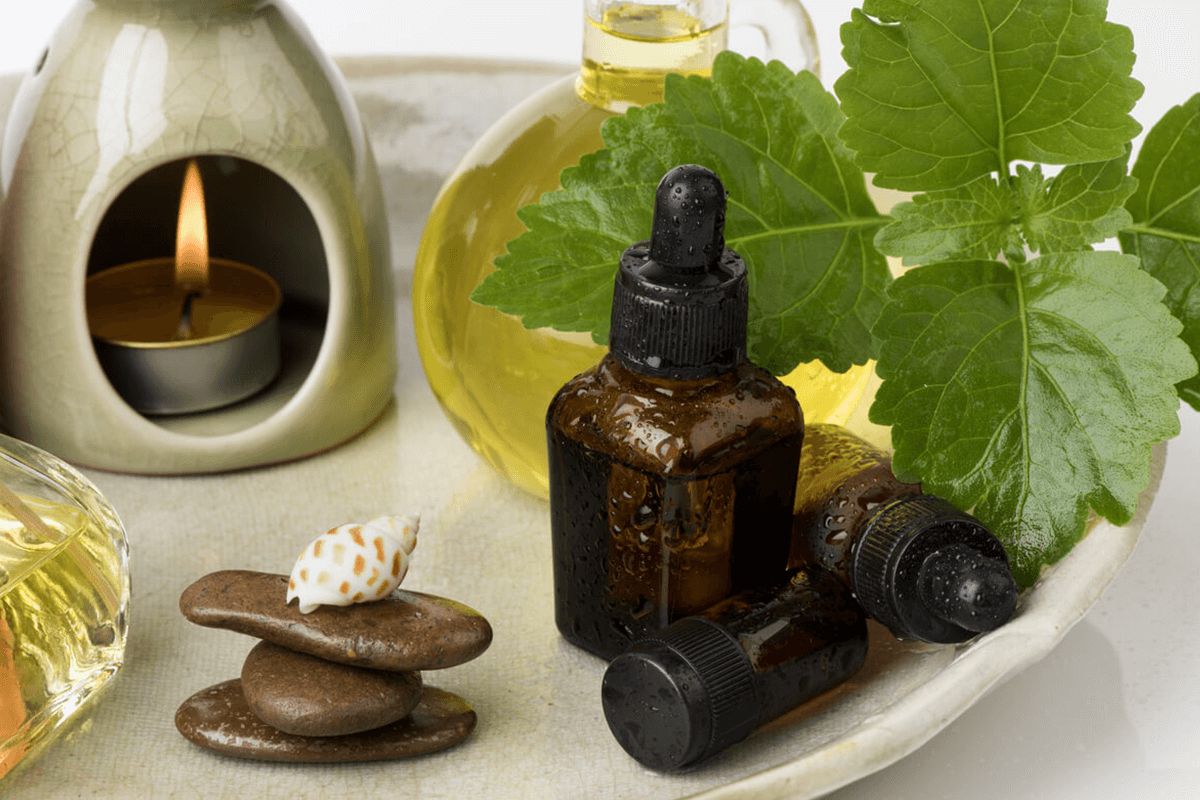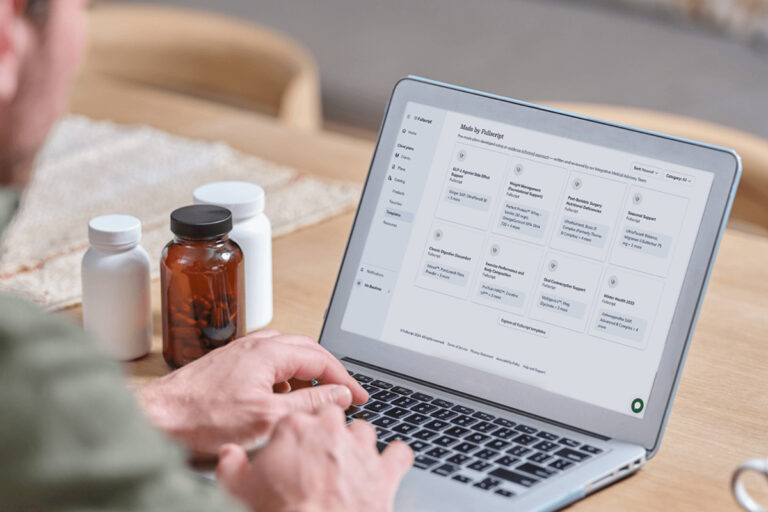What is patchouli?
Native to South Asia, the term patchouli stems from the Tamil word patchai meaning “green leaf.” (13) Patchouli’s green leaves are rich in essential oils including patchoulol, a chemical compound responsible for the therapeutic effects of patchouli oil. (7)How to use patchouli oil
Patchouli oil can be used in various ways, including aromatherapy or topical application. It is generally recognized as safe (GRAS) as a natural food additive by the U.S. Food and Drug Administration (FDA), although dietary sources don’t elicit therapeutic effects. (7) Using a high-quality therapeutic grade patchouli essential oil is preferred, as non-therapeutic patchouli oil may not provide the same effects. (13) When shopping, look for steam-distilled patchouli oil containing at least 30% patchouli alcohol. (7)Aromatherapy
When essential oils are inhaled, certain compounds stick to the olfactory nerve endings (that detect scents) found in the back of the nasal cavity. (18) These nerves communicate closely with the limbic system and hypothalamus, the areas of the brain that influence hormones, emotions, and mood. (16)(17)(18) Patchouli oil can be diluted in a bath, added to an air diffuser, or spritzed on your pillow to help create a calming atmosphere. (4)
Patchouli oil has a musky, earthy smell that blends well with lavender, rose, and bergamot essential oils. (10)
Topical application
When essential oil is absorbed through the skin, its compounds can enter the bloodstream where they then make their way to our brain. (18) Once in the brain, certain compounds can influence the central nervous system to promote mood-altering effects. (18) It’s important to note that essential oils are highly concentrated and may cause irritation if applied directly to the skin. (19) When applying topically, be sure to use a carrier oil, such as jojoba, sweet almond, or avocado oil, to prevent skin irritation. (12)5 benefits of patchouli oil
Patchouli alcohol has the chemical structure of a sesquiterpene alcohol, a compound that typically presents in low amounts in most essential oils and is known for its pharmacological activity. (3) Patchouli, Australian sandalwood, and German chamomile are examples of essential oils that contain large amounts of sesquiterpene alcohols. (2) In general, these oils have demonstrated antibacterial, anti-inflammatory, and calming effects. (3)Antimicrobial activity
Historically administered to relieve gastrointestinal (GI) upset, patchouli oil has been recognized for centuries in traditional Chinese medicine (TCM) for its antibacterial properties. (6) Experimental research suggests that patchouli oil effectively combats GI pathogens (harmful bacteria) without damaging our normal GI microorganisms. (14) In vitro, pathogens related to foodborne illness, inflammatory bowel disease (IBD), and peptic ulcers were reduced by patchouli oil. (14) The antimicrobial activity of patchouli oil may also be effective at inhibiting various bacteria, fungi, and yeasts related to the following conditions:- Acne
- Athlete’s foot
- Eczema
- Seborrheic dermatitis (11)
Anti-inflammatory activity
Non-steroidal anti-inflammatory drugs (NSAIDs), such as ibuprofen, are regularly used for the treatment of pain and inflammation; however, chronic NSAID use is associated with GI damage, including lesions, bleeding, and peptic ulcers. (8) Experimental animal research demonstrates that patchouli oil may be an effective anti-inflammatory agent, without the unwanted side effects of NSAIDs. (8) In vitro and in animal studies, patchouli oil has demonstrated the ability to suppress certain pathways involved in the inflammatory response, decreasing proinflammatory molecules and reducing inflammation and swelling. (7)Antioxidant activity
Key components of patchouli oil, including alkaloids, flavonoids, and terpenoids, are well-known antioxidant compounds. (14) In mice, the antioxidant properties of patchouli are most effective at protecting against premature aging of the skin (e.g., loose skin, sunburn, wrinkling) caused by ultraviolet (UV) radiation exposure from the sun. (9) In one animal study, topical application of patchouli oil conferred the following benefits:- Increased skin collagen content
- Limited UV damage
- Maintained skin elasticity
- Reduced skin wrinkle formation (9)
Calming properties
The strong, relaxing aroma of patchouli oil is often inhaled to manage anxiety, insomnia, and stress. (14) Aromatherapy with patchouli oil has been found to relax the sympathetic nervous system (SNS), the division of the nervous system that controls our fight or flight response. (1)(14) In a study with healthy adults, blood pressure fluctuations were monitored in order to interpret the effects of various essential oils on SNS activity. Relative to the control, aromatherapy with patchouli oil was found to decrease sympathetic activity by 40%. (5)Natural insecticide
Synthetic chemicals are often used to control the presence of insects, such as mosquitoes and termites; however, these chemicals often pose some human and environmental health risks. (20) Patchouli oil may serve as an eco-friendly, biodegradable insecticide. One study found that topically applied patchouli oil effectively repelled mosquito bites for up to two hours. (15) Other studies found patchouli oil to be toxic to certain species of ants and termites, causing mortality when they come in contact with the oil. (14) Did you know? One of the earliest known uses of patchouli was for protection against bed bugs. Fresh patchouli leaves were crushed and applied to insect bites to soothe the area. (13)The bottom line
While there are limited human studies, some evidence suggests that patchouli oil may be helpful for several ailments, including eczema, GI disorders, and stress, due to its antimicrobial, antioxidant, and anti-inflammatory properties. Patchouli oil can be used aromatically or applied directly to the skin when mixed with a carrier oil. Try to use a high-quality patchouli essential oil for the best results, and contact your integrative practitioner to find out if patchouli oil can support your wellness plan.- Alshak, M. N., & M Das, J. (2021). Neuroanatomy, sympathetic nervous system. In StatPearls. StatPearls Publishing.
- Buckle, J. (2015). Chapter 3 – Basic plant taxonomy, basic essential oil chemistry, extraction, biosynthesis, and analysis. In J. Buckle (Ed.), Clinical Aromatherapy (Third Edition). Churchill Livingstone.
- Clarke, S. (2008). Essential chemistry for aromatherapy. Churchill Livingstone.
- Fujiwara, Y., & Ito, M. (2015). Synergistic effect of fragrant herbs in Japanese scent sachets. Planta Medica, 81(3), 193–199.
- Haze, S., Sakai, K., & Gozu, Y. (2002). Effects of fragrance inhalation on sympathetic activity in normal adults. Japanese Journal of Pharmacology, 90(3), 247–253.
- Hu, G., Peng, C., Xie, X., Zhang, S., & Cao, X. (2017). Availability, pharmaceutics, security, pharmacokinetics, and pharmacological activities of patchouli alcohol. Evidence-Based Complementary and Alternative Medicine: eCAM, 2017, 4850612.
- Lee, H.-S., Lee, J., Smolensky, D., & Lee, S.-H. (2020). Potential benefits of patchouli alcohol in prevention of human diseases: A mechanistic review. International Immunopharmacology, 89(Pt A), 107056.
- Li, Y.-C., Xian, Y.-F., Ip, S.-P., Su, Z.-R., Su, J.-Y., He, J.-J., Xie, Q.-F., … & Lin, Z.-X. (2011). Anti-inflammatory activity of patchouli alcohol isolated from Pogostemonis Herba in animal models. Fitoterapia, 82(8), 1295–1301.
- Lin, R.-F., Feng, X.-X., Li, C.-W., Zhang, X.-J., Yu, X.-T., Zhou, J.-Y., Zhang, X., … & Zhan, J. Y.-X. (2014). Prevention of UV radiation-induced cutaneous photoaging in mice by topical administration of patchouli oil. Journal of Ethnopharmacology, 154(2), 408–418.
- Lis-Balchin, M. (2006). Aromatherapy science: A guide for healthcare professionals. Pharmaceutical Press.
- Orchard, A., & van Vuuren, S. (2017). Commercial essential oils as potential antimicrobials to treat skin diseases. Evidence-Based Complementary and Alternative Medicine: eCAM, 2017, 4517971.
- Orchard, A., & van Vuuren, S. F. (2019). Carrier oils in dermatology. Archives for Dermatological Research. Archiv Fur Dermatologische Forschung, 311(9), 653–672.
- Preedy, V. R. (Ed.). (2016). Essential oils in food preservation, flavor and safety.
- Swamy, M. K., & Sinniah, U. R. (2015). A comprehensive review on the phytochemical constituents and pharmacological activities of Pogostemon cablin Benth.: An aromatic medicinal plant of industrial importance. Molecules , 20(5), 8521–8547.
- Trongtokit, Y., Rongsriyam, Y., Komalamisra, N., & Apiwathnasorn, C. (2005). Comparative repellency of 38 essential oils against mosquito bites. Phytotherapy Research: PTR, 19(4), 303–309.
- U.S. National Library of Medicine. (2019). Hypothalamus. MedlinePlus. https://medlineplus.gov/ency/article/002380.htm
- U.S. National Library of Medicine. (2020). Limbic system. MedlinePlus. https://medlineplus.gov/ency/imagepages/19244.htm
- Watanabe, E., Kuchta, K., Kimura, M., Rauwald, H. W., Kamei, T., & Imanishi, J. (2015). Effects of Bergamot (Citrus bergamia (Risso) Wright & Arn.) essential oil aromatherapy on mood states, parasympathetic nervous system activity, and salivary cortisol levels in 41 healthy females. Complementary Medicine Research, 22(1), 43–49.
- Western Australia Dept. of Health. (n.d.). Essential oils – Health warning. Healthy WA. https://www.healthywa.wa.gov.au/Articles/A_E/Essential-oils
- Zhu, B. C.-R., Henderson, G., Yu, Y., & Laine, R. A. (2003). Toxicity and repellency of patchouli oil and patchouli alcohol against Formosan subterranean termites Coptotermes formosanus Shiraki (Isoptera: Rhinotermitidae). Journal of Agricultural and Food Chemistry, 51(16), 4585–4588.





